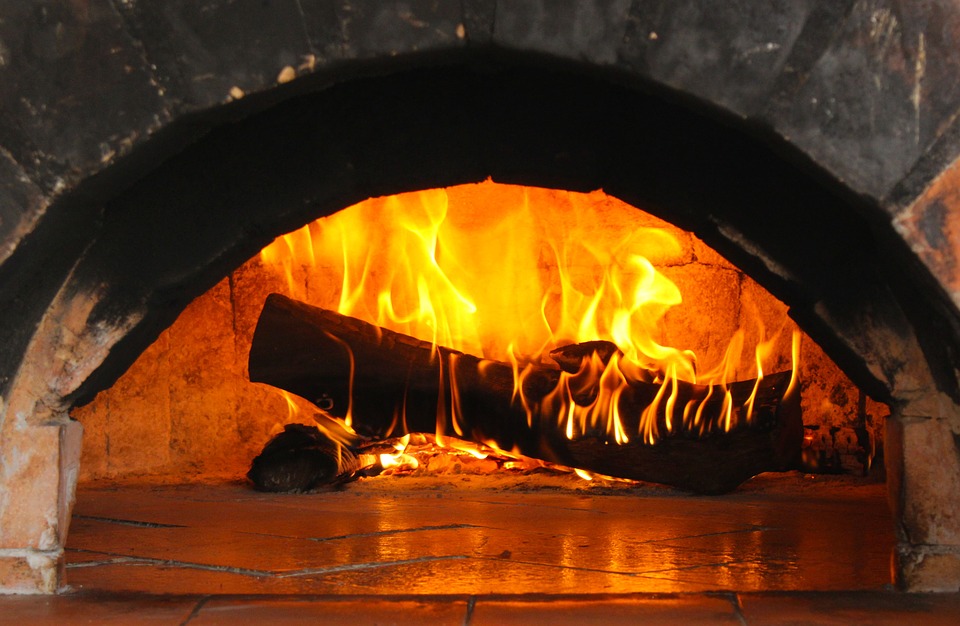I bet you never thought Raising Agents and Baking could be Interesting! Recipe for Flat Bread included.
As a history graduate and a ‘foodie’, I am fascinated about the history of baking. I am writing a series of small books at the moment – The Little Pocket Book of Baking, series. The first goes to the publisher next week, and should be available on Kindle shortly after. This will be on raising agents. I bet you did not think there would be enough information to make an interesting book on this topic?
As a ‘History Nut’ there is a chapter showing how raising agents developed over time. I thought I would give you a taster of this below. I have added a recipe relevant to the topic touched upon at the end of this article. I hope you enjoy; and please, look out for my little book!

The rich diet of nomadic early man began to be supplemented with the wild grains, fruits, and vegetables, readily available in their locality. Wild yeasts added rise to stone ground grains to give bread, albeit a slightly raised flat bread. As nomadic man began to settle and farm, ingenuity produced better results: Yeast skimmed from fermenting beer, or a small amount of uncooked dough kept over from the previous day. These not only added some ‘lift’, but also increased flavour. The sourdough process in vogue today is a good analogy.
Evolution of chemicals
Fire-ash the ash from wood fires, also known as Potash, produced an early chemical raising agent. ‘Lye’ was made by passing water through a barrel of ashes over and over until an egg floated on the residue. A portion of this ‘lye’ was then evaporated to make the solid – Potash. This during the 17th century was purified to make pearl ash. Pearl ash was created by baking potash in a kiln to remove impurities; the fine white powder which remained after firing was peal ash. This continued in use as a leaven well into the 18th century. The first patent issued by the US Patent Office was awarded to Samuel Hopkins in 1790 for an improved method of making potash and pearl ash. It did have a bitter aftertaste so a mild acid in some form had to be used with it to counteract this issue, and aid with rise. The chemical reaction of the two producing Carbon dioxide during baking. Interestingly, ‘lye’ was also used to make tablets of soap. The ‘lye’ was boiled with lard or other accessible fat until thick. This mixture was then poured into moulds and allowed to harden.

Now for the recipe. This is a simple but delicious flat bread from India. Use it when you have made a spicy stew, or curry. It is simple to do and delicious. You can put cheese, nuts and fruit, or, anything you fancy into the centre of the ball before rolling it flat – even something sweet and yummy. Brush plain melted butter on top if you don’t want the taste of garlic and coriander.
Naan Bread
Yield: 9 Naans
3 1/4 c (14 oz / 400g) White general purpose plain flour
1 tsp Baking powder
1/4 tsp Salt
1 3/4 c (15 oz/ 430g) Plain yogurt
Unsalted butter melted
Large clove garlic
Chopped coriander
Sieve dry ingredients into a bowl.
Add as much yogurt as you need to make soft dough.
Knead for about 10 minutes.
Cover the bowl with a damp cloth and rest somewhere warm for 1 ½ to 2 hours.
Meanwhile, mash the garlic and heat gently with the butter. Do not cook the garlic just warm the butter to infuse with garlic flavour.
Knead the dough again and divide into nine equal parts.
Keep them covered.
Heat a cast-iron skillet or other heavy pan over a low flame, and preheat the broiler (grill).
Divide the dough into 9 equal balls. Flatten slightly, then use a rolling pin on a lightly floured surface to 1/8 th ” thick.
When the skillet is very hot, pick up the naan and slap it onto the heated surface. Let it cook slowly for about 4 to 5 minutes.
Now put the skillet under the broiler for 1 to 1-1/2 minutes or until the puffing-up process is complete and there are a few reddish spots on the naan.
Add the chopped coriander to the warm butter/garlic mixture.
Remove the naan with a spatula.
While hot, brush with the flavoured butter.
Repeat the process with the remaining dough balls. If your pan is large enough you put more than one in.
Thanks - I always enjoy Naan, but have never made my own (I'm a sourdough junkie - see, for instance, "How to Make Organic Red Fife Sourdough Bread") - I'm inspired to use your recipe the next time I make Greenn Thai Curry.
I love Naan myself, such a versatile recipe! If you are a sourdough junkie you should definitely check out my earlier article on making a sourdough yeast starter from scratch: https://steemit.com/life/@get-baking/basic-natural-yeast-starter-and-sourdough-bread-baking-recipe
Thanks for the Red Fife Sourdough recipe I will try it out!
Do try this recipe, it is very simple and adds to the experience of 'mopping up' the delicious sauce. Thank you for commenting on my writing, I have added a response to your website too. When I finally get to the bread 'Little Pocket Book of Baking, I hope you will look favourably upon my thoughts. X
Good food is equal to good life ! :)
I so agree, thank you. I am going to post much more frequently in future. I want to pass on the tips I have used throughout my long life, so will start posting tips, hopefully most days. Number two, today will be a continuation of the ginger tip of yesterday. I hope you saw it?